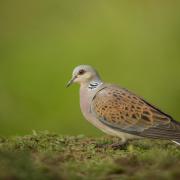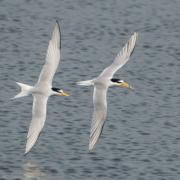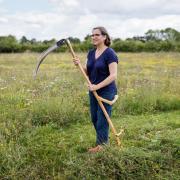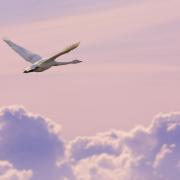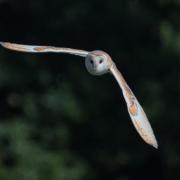Matt Gaw joins wildlife photographer Jamie Hall for an evening watching some of Suffolk’s most beautiful birds

I am talking to wildlife photographer Jamie Hall about watching urban foxes in Norwich when he mentions the owls. Regular visitors, they arrive at 6pm every night, quartering the field and coming into land on old fence posts at the edge of his garden.
The pair are also surprisingly tolerant of humans, not reacting to Jamie’s flash bulb, and even allowing him to walk about as long as he stays behind the headlight beam of his car. “They’re here right now,” he says. “They’ll probably hang around until dawn.”
I look at the clock on the wall. It’s 6.05pm. By 6.07pm he’s sent me a picture of the back of his camera. Sitting side on, the barn owl’s face is lowered with only one dark eye visible, the whiteness of her lightly spotted chest contrasting with the sunburst of gold and graphite covering her back and folded wings. It is a beautiful shot.
Three days later and I am bumping down a muddy track to Jamie’s house. We’ve decided to watch the owls before heading out for the foxes. But I am late. The sun was already setting when I crawled over the Orwell Bridge 25 minutes ago and now I’m worried I’ve missed the show.
Arriving I can see that Jamie is already in position, sitting inside his car – a make shift bird hide for the night. He signals to me and as I clamber in next to him he points out two gnarled posts, jutting from long tussocky grass.
“There have been three of them here tonight,” he says without taking his eyes away from the posts. “I’ve never seen so many barn owls at the same time.”
There is heavy rain forecast for later, but at the moment the sky is perfectly clear, moonless and freckled with stars. A slight glow from Jamie’s house and a slick of light from distant towns illuminates the now empty perches. I glance at my phone. I know we’ve got a narrow window here before we have to make a move – a drive of more than an hour ahead of us.
When the first owl arrives, it seems almost to burst out of the night in front of us. It materialises with a silent flap of white, a beaked angel with a vole clutched in a yellow knuckle of talons. I make out the ink spray of black spots on the chest that suggest the owl’s a female before she moves off again. A slightly smaller barn owl, perhaps a male, follows behind, occasionally making half-hearted but acrobatic challenges for the food. They fly over the car and away towards the nest boxes at a church nearby.
I grin at Jamie. It wasn’t long ago that barn owls were really struggling here and the chances of seeing any in an evening were few and far between. In 2005 the county’s population fell to under 70 breeding pairs as a combination of Dutch elm disease and modern barns squeezed nesting opportunities. The launch of the Suffolk Community Barn Owl project, an initiative supported by Suffolk Wildlife Trust, has to date seen 1,800 barn owl boxes installed in the county. The project has left owl numbers at around 400 breeding pairs, the highest since records began.
It is gone 1am when we drive back into Suffolk and the rain is hammering down. Windscreen wipers barely make a difference and the wheels are dragging through deep, dark puddles that have formed at the side of the winding B roads. Suddenly Jamie stops and lowers my window. Hunkered in the branches of an oak, almost within touching distance, sits a barn owl stranded by the downpour, a lack of waterproofing the payment for the power of silent flight. He stares moodily at us with liquid black eyes, mottled caramel wings battened down and hunched against the weather. His face is the perfect feathered heart.
For information on the best places to see barn owls near you visit www.suffolkwildlifetrust.org


















